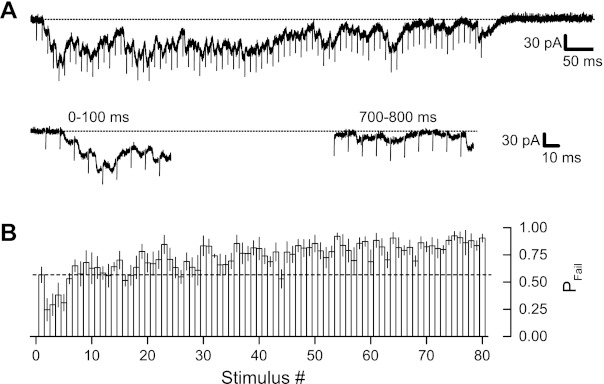Fig. 2.

Minimal stimulation-evoked excitatory postsynaptic currents (EPSCs) showed increased failure rate during 100-Hz HFS. A: synaptic currents recorded from 1 cell during an 800-ms, 100-Hz HFS are shown at top, with currents from the beginning (0–100 ms) and end (700–800 ms) of HFS shown at bottom. Early during 100-Hz HFS synaptic failures were relatively rare, but failures became increasingly common with time during HFS. B: a total of 6 cells (in 6 different slices) were examined. HFS was repeated up to 20 times in each cell in the presence of d-2-amino-5-phosphonopentanoic acid (D-AP5) and nifedipine. The proportion of failures (Pfail) for each of 80 stimuli in the HFS was determined separately for each cell and then averaged across cells to produce this summary graph. The proportion of failures decreased from the first to the second stimulus and remained low for several stimuli before returning to the initial level, and then gradually rising to a much higher level. Dotted lines in A indicate holding current level; dashed line in B indicates initial proportion of failures. Stimulus artifacts in A were partially removed.
